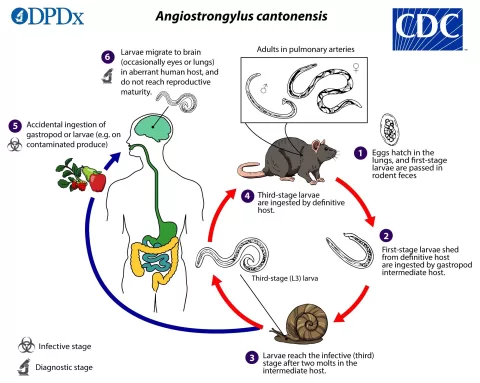Next-Generation Sequencing (NGS) is revolutionizing the diagnosis of complex infections, particularly in cases of culture-negative endocarditis. By leveraging groundbreaking metagenomic sequencing techniques, clinicians can uncover elusive pathogens that traditional methods might miss, such as those associated with infective endocarditis. This innovative approach is especially crucial for diagnosing culture-negative infections where blood cultures fail to identify the underlying bacteria. Researchers are increasingly using plasma microbial cell-free DNA (mcfDNA) as a diagnostic tool, which can significantly enhance our ability to detect pathogens like *Streptococcus gordonii* from heart valve tissues. As NGS continues to develop, it promises to pave the way for new, effective diagnostic and therapeutic strategies for patients facing challenging infections.
Advanced sequencing technologies, often referred to as next-generation sequencing (NGS), are reshaping the landscape of medical diagnostics for various infections. These techniques, which include methodologies like metagenomic sequencing, allow for comprehensive analysis of microbial DNA, providing critical insights for cases such as culture-negative endocarditis. The application of microbial cell-free DNA (mcfDNA) diagnostics enhances pathogen detection in challenging cases, leading to more accurate identifications of causative agents behind infective endocarditis and other complex infections. This evolution in diagnostic capability marks a significant milestone in the clinical approach to culture-negative infections, where traditional lab results frequently fall short. By integrating advanced tools and methodologies, healthcare professionals can better tackle the intricate challenges posed by elusive pathogens.
Understanding Next-Generation Sequencing in Infective Endocarditis
Next-Generation Sequencing (NGS) represents a transformational approach to understanding and diagnosing complex infections such as infective endocarditis. This cutting-edge technology enables the direct sequencing of entire genomes, allowing for the rapid identification of microbial pathogens that traditional culture methods often overlook. In cases of culture-negative subacute native aortic endocarditis, where typical blood cultures yield no results, NGS can reveal the presence of elusive bacterial species, paving the way for targeted therapy. Such techniques harness the power of metagenomic sequencing to analyze multiple pathogens from a single specimen, thus enhancing diagnostic accuracy and treatment efficacy.
The utility of NGS extends beyond mere pathogen identification; it also allows for a deeper understanding of the microbiome’s role in disease. By sequencing microbial cell-free DNA (mcfDNA) extracted from patient plasma or tissue, clinicians can obtain a comprehensive view of the infectious landscape. This is particularly important in the context of endocarditis, where previous antibiotic treatments may obscure the true etiological agent. The ability to perform extensive genetic analysis aids in unraveling the complexities of culture-negative infections and directly correlates with improved clinical outcomes.
The Role of mcfDNA in Diagnosing Culture-Negative Infections
Plasma microbial cell-free DNA (mcfDNA) has emerged as a pivotal diagnostic tool in the identification of pathogens associated with culture-negative infections, particularly in cases of infective endocarditis. The significance of mcfDNA lies in its ability to reflect the active presence of microbial DNA in the bloodstream, offering insights into potential pathogens even in the absence of viable cultures. Since mcfDNA has a brief half-life, its analysis requires precise timing and methodology, ensuring that clinicians capture the most relevant microbial signatures for diagnosis. This approach is instrumental in accurately diagnosing cases that would otherwise remain unresolved due to negative culture results.
Clinical findings support the effectiveness of mcfDNA analysis in detecting pathogens that may otherwise evade traditional diagnostic efforts. For instance, in the discussed case, initial detection of *Solobacterium moorei* through mcfDNA sequencing, followed by the identification of *Streptococcus gordonii*, exemplifies the dynamics of microbial presence and the potential for misidentification based on testing conditions. This highlights the necessity for multiple sampling and analysis to confirm diagnostic accuracy. Incorporating mcfDNA analysis into routine diagnostics can therefore lead to the identification of infective agents and better management of culture-negative endocarditis cases.
Metagenomic Sequencing: A Game Changer in Endocarditis Diagnosis
Metagenomic sequencing holds promise as a game-changing technology in the diagnosis of infective endocarditis, especially when conventional methods fail. Unlike traditional techniques that rely on the growth of bacteria in culture, metagenomic sequencing allows for the direct analysis of genetic material from various microbial communities present in a sample. This comprehensive approach can identify not only common pathogens but also rare or previously uncharacterized organisms that contribute to infection. As such, it provides clinicians with critical information that can guide effective treatment and improve patient outcomes.
A key advantage of metagenomic sequencing is its ability to elucidate polymicrobial infections, which are prevalent in cases of endocarditis. In the context of the reported case, subsequent sequencing detected *Streptococcus gordonii*, which may have gone unnoticed in standard culture tests. This underlines the potential of metagenomics to enhance our understanding of the microbial landscape associated with infective endocarditis. By revealing the presence and abundance of various pathogens, clinicians can tailor antibiotic therapies to target specific bacterial strains, increasing the likelihood of successful treatment and patient recovery.
Addressing Culture-Negative Infections with Advanced Diagnostic Strategies
Culture-negative infections present significant challenges in clinical settings, particularly in diagnosing conditions like infective endocarditis. Standard laboratory practices often yield negative results despite the presence of a clinically significant infection, leading to frustration for both patients and healthcare providers. Advanced diagnostic strategies, including NGS and mcfDNA analysis, provide a beacon of hope by offering more reliable methods of pathogen detection and characterization. These technologies empower healthcare providers to make informed decisions, thus reducing the time to diagnosis and enabling timely interventions.
Incorporating advanced diagnostics into routine clinical practice necessitates careful consideration of sample collection, processing, and interpretation methodologies. Proactive measures, including training and resources dedicated to the implementation of NGS, can enhance the capabilities of laboratories to manage complex cases of culture-negative endocarditis. Furthermore, collaboration between microbiologists, infectious disease specialists, and clinicians is essential to optimize patient management strategies. By embracing innovative diagnostic techniques, the healthcare community can better tackle the challenges presented by culture-negative infections.
The Importance of Timely Diagnosis in Infective Endocarditis
Timely diagnosis is critical in improving the outcomes of patients with infective endocarditis. Delays in identifying the causative organism can lead to severe complications, including heart failure, systemic embolization, and even death. Therefore, integrating next-generation sequencing and mcfDNA analysis into the diagnostic pathway can significantly expedite the time to effective treatment. Rapid identification of microbial pathogens allows for the initiation of appropriate antibiotic therapy sooner, which is essential given the fast progression of endocarditis.
In the case discussed, the initial misdiagnosis linked to *Solobacterium moorei* underscores the necessity of swift and accurate testing methods. The transition to identifying *Streptococcus gordonii* through advanced sequencing highlights the evolving nature of microbial presence in the body, particularly after antibiotic exposure. This dynamic reinforces the importance of using cutting-edge techniques to facilitate early treatment recommendations. Enhanced diagnostic speed not only aids in managing current infections but also plays a pivotal role in preventing further complications associated with endocarditis.
Leveraging LSI for Enhanced SEO in Infective Endocarditis Diagnostics
Leveraging Latent Semantic Indexing (LSI) is crucial when creating SEO-optimized content related to infective endocarditis and its diagnostics. By incorporating related terms such as ‘metagenomic sequencing,’ ‘culture-negative infections,’ and ‘mcfDNA diagnosis,’ content creators can enhance the visibility of their material online. This improves the chances that healthcare professionals and researchers will discover vital information about advanced diagnostic techniques, leading to better patient management and outcomes in real-world settings. Utilizing LSI effectively connects various aspects of the topic, enriching the reader’s understanding while complying with search engine algorithms.
SEO strategies that effectively utilize LSI can lead to an increase in organic traffic to webpages focused on advanced diagnostics in infective endocarditis. Content that resonates with practitioners looking for solutions regarding culture-negative infections will naturally rank higher on search engine results pages. By ensuring that terms related to infective endocarditis and complementary technologies appear throughout the text, associations between concepts are strengthened. An educated audience will appreciate information that ties together diagnostic innovations and relevant terminology, ultimately fostering a more informed healthcare community.
Future Directions in Endocarditis Diagnostics
As technology continues to evolve, the future of diagnosing infective endocarditis will likely be shaped by advancements in genome sequencing and bioinformatics. The integration of artificial intelligence with diagnostic tools could facilitate faster analysis of sequencing data, identifying pathogens with unparalleled precision. These innovations could streamline the diagnostic process, transforming how clinicians approach patient care in cases of culture-negative infections. Future studies may also focus on optimizing sample handling and analysis protocols to further improve the accuracy and reliability of NGS results.
Moreover, ongoing research into the microbiome’s role in heart disease could shed light on how certain pathogens contribute to infections like endocarditis. Greater insights into the interactions between different microbial species obtained through metagenomic sequencing are anticipated. By advancing our understanding of these complex relationships, healthcare can develop preventative measures and therapeutic approaches targeted at reducing the incidence of this serious condition. Ultimately, as diagnostic tools become more sophisticated and user-friendly, they will empower clinicians to diagnose infective endocarditis with greater efficiency and accuracy.
Frequently Asked Questions
What is next-generation sequencing (NGS) and how is it used in diagnosing culture-negative infections?
Next-generation sequencing (NGS) is a high-throughput method that allows for rapid sequencing of entire genomes or specific DNA fragments. It is particularly beneficial in diagnosing culture-negative infections by identifying microbial DNA directly from patient samples, such as blood or tissue, without the need for traditional culture methods.
How does metagenomic sequencing enhance the diagnosis of infective endocarditis?
Metagenomic sequencing enhances the diagnosis of infective endocarditis by enabling the simultaneous detection of multiple pathogens in a single sample. This approach can reveal the true causative agents of infections when conventional cultures fail, as shown in cases where specific pathogens, like *Streptococcus gordonii*, were identified post-treatment.
What is mcfDNA and its role in next-generation sequencing for diagnosing infections?
Microbial cell-free DNA (mcfDNA) consists of extracellular DNA released into the bloodstream by dying or lysed microbial cells. In next-generation sequencing, mcfDNA can serve as a valuable biomarker for infections, allowing for the detection of pathogens present in low abundance, particularly in cases of culture-negative infections.
Why is diagnosing culture-negative endocarditis challenging and how can NGS help?
Diagnosing culture-negative endocarditis is challenging because conventional blood cultures often fail to identify the causative organism. Next-generation sequencing can overcome this challenge by providing a comprehensive analysis of microbial DNA, thus revealing pathogens that may not be detectable through standard culture methods.
What specific examples demonstrate the use of NGS in diagnosing infective endocarditis?
In a case study, next-generation sequencing was used to diagnose infective endocarditis when initial blood cultures revealed no growth. Instead, mcfDNA sequencing first identified *Solobacterium moorei*, but subsequent tests confirmed *Streptococcus gordonii* as the actual infective agent after treatment, highlighting the importance of NGS in accurately diagnosing endocarditis.
How does the timing of sampling influence the results of next-generation sequencing in diagnosing endocarditis?
The timing of sampling can greatly influence results because microbial DNA, such as mcfDNA, can change based on the patient’s treatment history and the dynamics of infection. This case showed that repeated sampling and timely NGS can provide more accurate pathogen identification for endocarditis when initial tests yield unclear results.
Can next-generation sequencing replace traditional diagnostic methods for endocarditis?
While next-generation sequencing offers a powerful alternative for diagnosing culture-negative endocarditis, it is not meant to fully replace traditional methods. Instead, NGS should be seen as a complementary tool that can provide deeper insights and improve diagnostic accuracy, especially in complex cases.
| Key Points |
|---|
| Next-Generation Sequencing (NGS) enhances diagnosis of infective endocarditis, especially in culture-negative cases. |
| A case study in Switzerland highlights the diagnostic challenges and the importance of timely sampling. |
| Plasma mcfDNA is a key component in NGS, aiding in the identification of pathogens. |
| Initial detection of *Solobacterium moorei* was found unreliable; later tests identified *Streptococcus gordonii* as the actual pathogen. |
| Multiple samples and follow-up tests are crucial for accurate diagnosis in endocarditis cases. |
| This study emphasizes the need for advanced diagnostic tools in culture-negative infections. |
Summary
Next-Generation Sequencing (NGS) is revolutionizing the diagnosis of infections, particularly in complex cases like culture-negative infective endocarditis. This innovative technology enables healthcare professionals to accurately identify pathogens that conventional culture methods may miss. The case study discussed illustrates how mcfDNA analysis can shift initial diagnoses and improve patient care through timely and precise intervention. As NGS continues to evolve, it fosters the development of new diagnostic strategies that could significantly enhance treatment outcomes.
The content provided on this blog (e.g., symptom descriptions, health tips, or general advice) is for informational purposes only and is not a substitute for professional medical advice, diagnosis, or treatment. Always seek the guidance of your physician or other qualified healthcare provider with any questions you may have regarding a medical condition. Never disregard professional medical advice or delay seeking it because of something you have read on this website. If you believe you may have a medical emergency, call your doctor or emergency services immediately. Reliance on any information provided by this blog is solely at your own risk.








